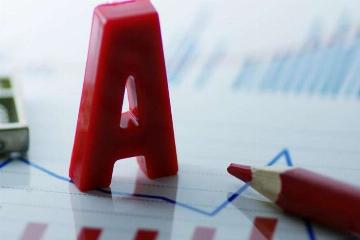The True Reasons Behind the A-Share Market Plunge
Advertisements
1
Financial markets worldwide are currently experiencing a turbulence that seems almost prophetic in the face of looming geopolitical tensionsThe specter of warfare has a peculiar way of unsettling investors, setting off a chain reaction that can reverberate from one economy to another, and in this case, it has impacted the capital markets of Russia, Europe, and the United States alikeHowever, the most apparent fallout isn’t borne by the actors involved directly but by spectators caught in the crossfire—in this instance, the Chinese A-share market participants.
The drop on January 25, when all three major indices in China faced a collective nosedive, was starkThe Shanghai Composite Index spiraled down to 3,433.06 points, reflecting a steep decline of 2.58%, marking its most significant single-day drop in 18 monthsMeanwhile, the Shenzhen Component fell by 2.83%, closing at 13,683.89 points, and the ChiNext board slumped to 2,974.96 points, dipping below the psychologically critical 3,000-point milestone
Advertisements
The Hu-Shen 300 index registered a drop of 2.26%, while the Sci-Tech 50 index also witnessed a decline of 2.35%.
Across all sectors, losses were widespread, with only 268 stocks rising against a staggering 4,409 that falteredA dismal indicator of market health, 442 stocks plummeted over 7%, while 81 stocks hit their daily limit downThe only exception to this market trend appeared in the precious metals sector, where safe-haven assets gained traction amidst the chaos, offering a glimmer of respite for investors seeking shelter from the storm.
As the trading day concluded, the total market capitalization of A-shares stood at a staggering 94.135 trillion yuan, a drop of over 27.461 billion yuan from the previous dayWith approximately 197 million investors participating in the market, this translates to an average loss of 14,500 yuan per individual investor—a harrowing statistic that underscores the emotional and financial toll such downturns inflict.
Critics have pointed to the decline as a predictable outcome of external market pressures among global actors, a narrative that seems too convoluted for many
Advertisements
The true culprit behind this irrational downturn lies at home, within the very fabric of the A-share marketThe conjectured external factors, may it be impending warfare or interest rate hikes in the United States, fail to capture the essence of an economy grappling with underlying challenges that have yet to be addressed.
At the turn of the new year, the A-share market had already entered a correction phase, primarily characterized by structural adjustmentsHowever, the increasingly grim economic indicators, combined with expectations of U.Sinterest rate hikes and looming credit risks in the Chinese real estate market, have led to a pervasive sense of pessimism among investorsThese apprehensions have been compounded by global concerns, making the market’s reaction appear both understandable yet disheartening.
Even in the absence of geopolitical issues, expectations of a tightening monetary policy could have led to downturns, positioning Chinese markets in a precarious situation
Advertisements
The narrative transpires that regardless of global events, the outcome often points downward, a testimony to the internal systemic issues plaguing the Chinese economy.
While the global market collapse might serve as a triggering point, it has tripped a delicate balance within the Chinese markets, morphing what was initially seen as a structural adjustment into a broad-based routThis shift is a media-savvy interpretation of market dynamics—what seems like a panic is actually a calculated decision driven by rational market forces longing for stability amidst volatility.
As for the underlying tension between Russia and Ukraine, cynics find the likelihood of a protracted military conflict as minimal, suggesting that any grand displays of military might from either side might be mere posturingNotably, Russia, while capable of waging war in the short term, grapples with substantial repercussions, primarily the sanctions and economic penalties that would follow, threatening an already fragile economy.
Ironically, any potential conflict would swiftly escalate energy prices—a situation that neither the U.S
- Focus on Financial Service Details
- Unveiling Quantum Stock Volatility
- Bank of Korea Maintains Interest Rate at 3%
- Currency or Stocks: A Policy Dilemma
- Digitalization Boosts Sino-Arab Energy Ties
nor European nations desire—given that political instability could exacerbate inflationary pressures already afflicting their economiesRising crude oil costs and skyrocketing prices impact consumer behavior in the U.S., wherein citizens reevaluate their budgets in reaction to gas prices swellingAs for Europe, it suffers acutely, grappling with an energy crisis worsened by its dependence on Russian gas imports, a lifeline that could be jeopardized should tensions escalate.
In the eyes of many, a war may present challenges even for A-share investors, whose fortunes often hinge upon external economic currentsYet, there is an intrinsic complexity to observing how upheaval in one part of the world can cascade and imperil investments globallyThus, catching up on market losses becomes a daunting task, especially when communities affected by these events are often left to weather the economic fallout without the reprieve of support.
In this turbulent climate, as A-shares find themselves mired in losses, a salient question lingers in the minds of countless investors: Can we afford to pick through the wreckage and find value among bloodied chips scattered across the market floor? Perhaps, reckoning with economic realities and embracing informed strategies is vital as the tides of fortune shift like grains of sand beneath one’s feet

Leave a Reply
Your email address will not be published. Required fields are marked *